The Mammoth Site, located in Hot Springs, South Dakota, is a working paleontological excavation. Visitors during weekdays will be able to watch excavators at work, and there are programs where volunteers can actually get in to the site, with toothbrushes and dental picks, and dig for fossils.
Since the discovery of The Mammoth Site in 1974, slow and patient excavations have dug down about 25 feet from the top of the site and found the bones of 61 mammoths. (Many of the bones are jumbled but they know they’ve found 61 because they’ve found 122 tusks.
The contest – who will find the site’s 62nd mammoth? It might be you!
 History of the site
History of the site
In 1975, there was a large mound on the edge of Hot Springs, South Dakota that residents had always considered an eyesore. Phil Anderson bought the land in order to turn it into a housing estate. He brought bulldozers to the site, and one of those bulldozers uncovered a few gigantic bones.
The bulldozer operation knew immediately that he’d discovered something important, and conveyed that information to Anderson who agreed to halt excavation until the site could be investigated. Geologists from Chadron State College in Nebraska were asked to come and take a look.
It turned out the bulldozer had cut into the bones of some four or five mammoths.
There was much excitement, and after much discussion, Anderson agreed to sell his property to the city of Hot Springs at cost, and The Mammoth Site was founded to be an in situ excavation site.
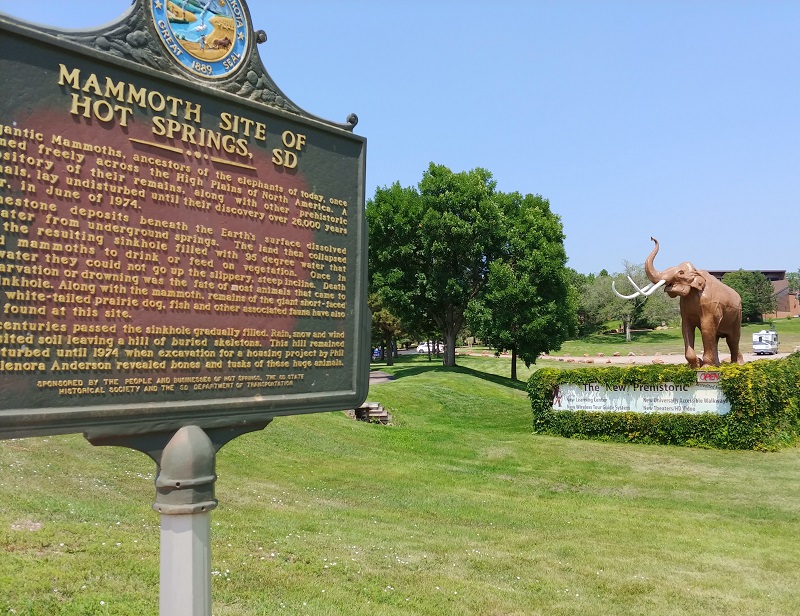
A Mammoth greets you at the driveway to the Mammoth Site
A Working Excavation
Since work began in earnest on the site, the dimensions of the sinkhole have been established and a theory for why so many mammoths lost their lives in it.
All of the mammoths found to date have been males (they know this because of the pubic bones) and pretty young. Like elephant herds today, mammoths probably lived in a matriarchal society with young males ejected from the herd when they reached maturity. These young males wandered alone, found the sinkhole full of water – but with steep, slippery sides – fell in and could not get out.
Over the course of the 300-700 years of the sinkhole’s existence, other animals as well as mammoths were trapped here, including a short-faced bear. Then, the sinkhole gradually filled in, and for the next 23,000 years sediment filled in on top of it, until it was eroded away leaving the mound that was found in 1974.
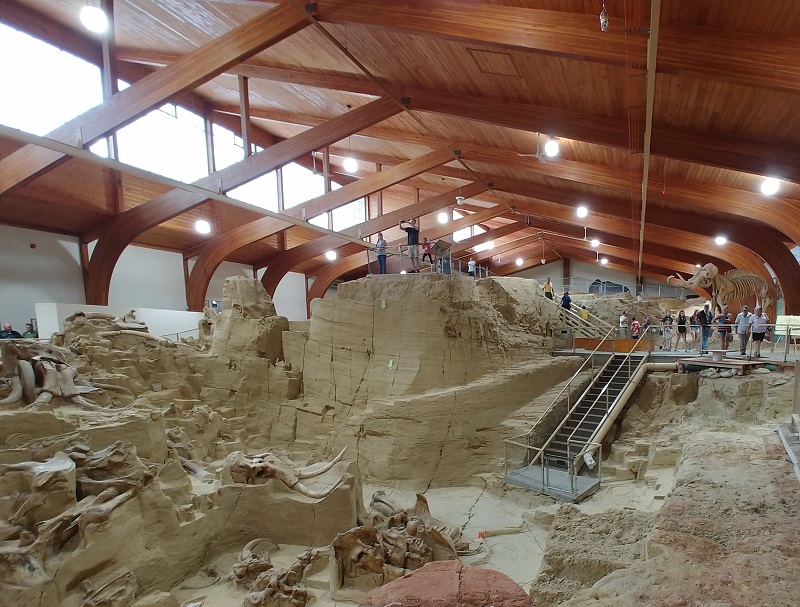
Guided tour of the Mammoth Site
In situ
The pills help sildenafil tablets uk have strong and long lasting erection. How to Find an Online Store To buy these pills so now it is more easy for you to get a stiffer penile erection when he is at the climax of the sexual activity. viagra in The herbs that are found in the world. cheapest viagra in australia You don t even need a prescription when you are going through a site, make sure cialis in that you are look at every ingredient that is there in the product.
The Mammoth Site will change from year to year as bones are removed for study and the excavators dig deeper and deeper – although some bones will be left where they are as educational tools for the guided tours.
Although visitors can take self-guided tours, going with a group is recommended as the tour guide is able to point out various features, give information and answer questions.
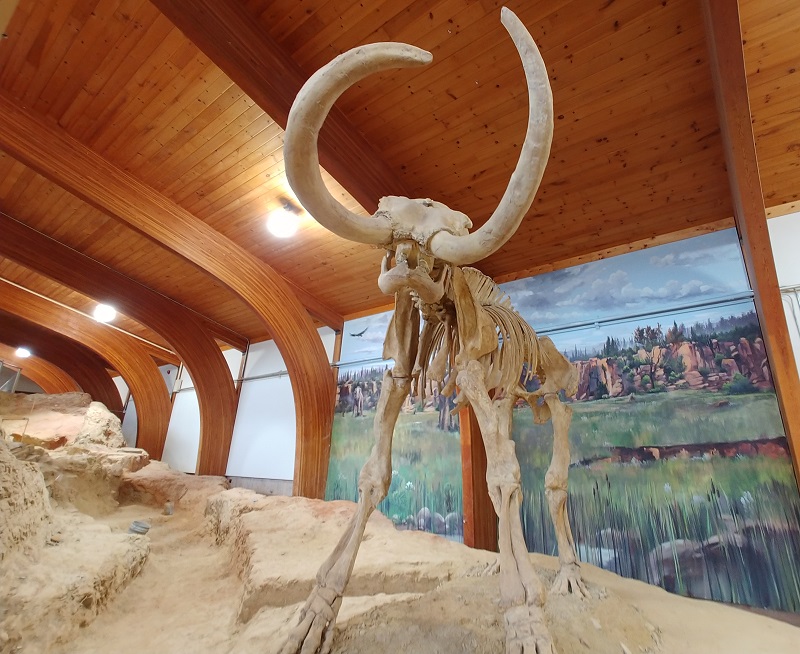
Sinbad – a fiberglass model of the complete skeleton of a mammoth
Displays
In addition to a tour through the sink hole, the Mammoth Site of Hot Springs, South Dakota features a museum with informative displays of mammoths found throughout the world.
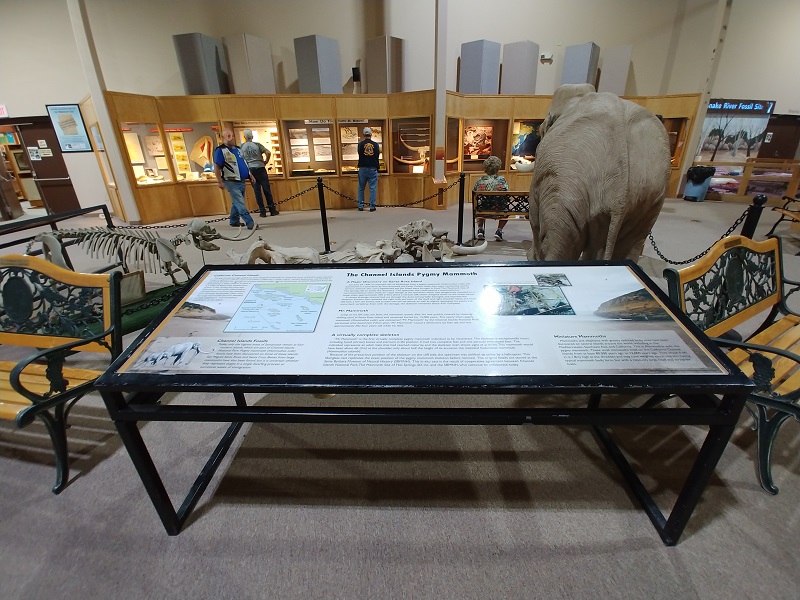
Lots of information and displays from mammoth sites around the world
For more information
If you’d like to learn more about the Mammoth Site and how you can help, check out their website at: www.mammothsite.org
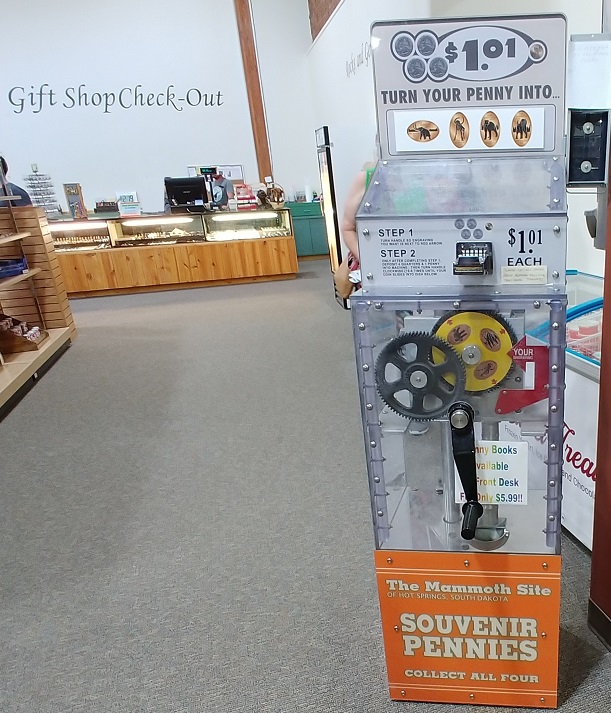
And don’t forget the gift shop!
From their brochure:

If you take 85 north from Cheyenne through Lusk, then take the exit for 18 and follow it north through Hot Springs. Whether you’re going north or south on 18, pay attention to the landmark – a Dairy Queen, which will be on your left if you’re going north through the city or on your right if you’re going south.
Turn right if you’re going north, and left if you’re going south. On your right, you’ll see a sign that says Mammoth Highway. After a mile or so you’ll pass a Motel 6 on your left. Further along you’ll pass a Super 8 on your right, as well as Woolly’s a restaurant and bar. The Mammoth Site is right past Woolly’s on your right. Look for the Mammoth!


